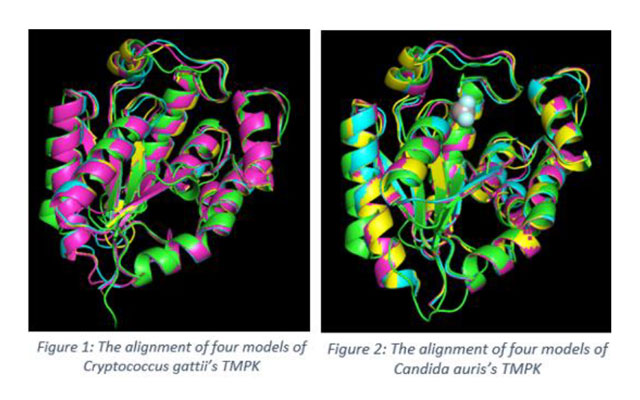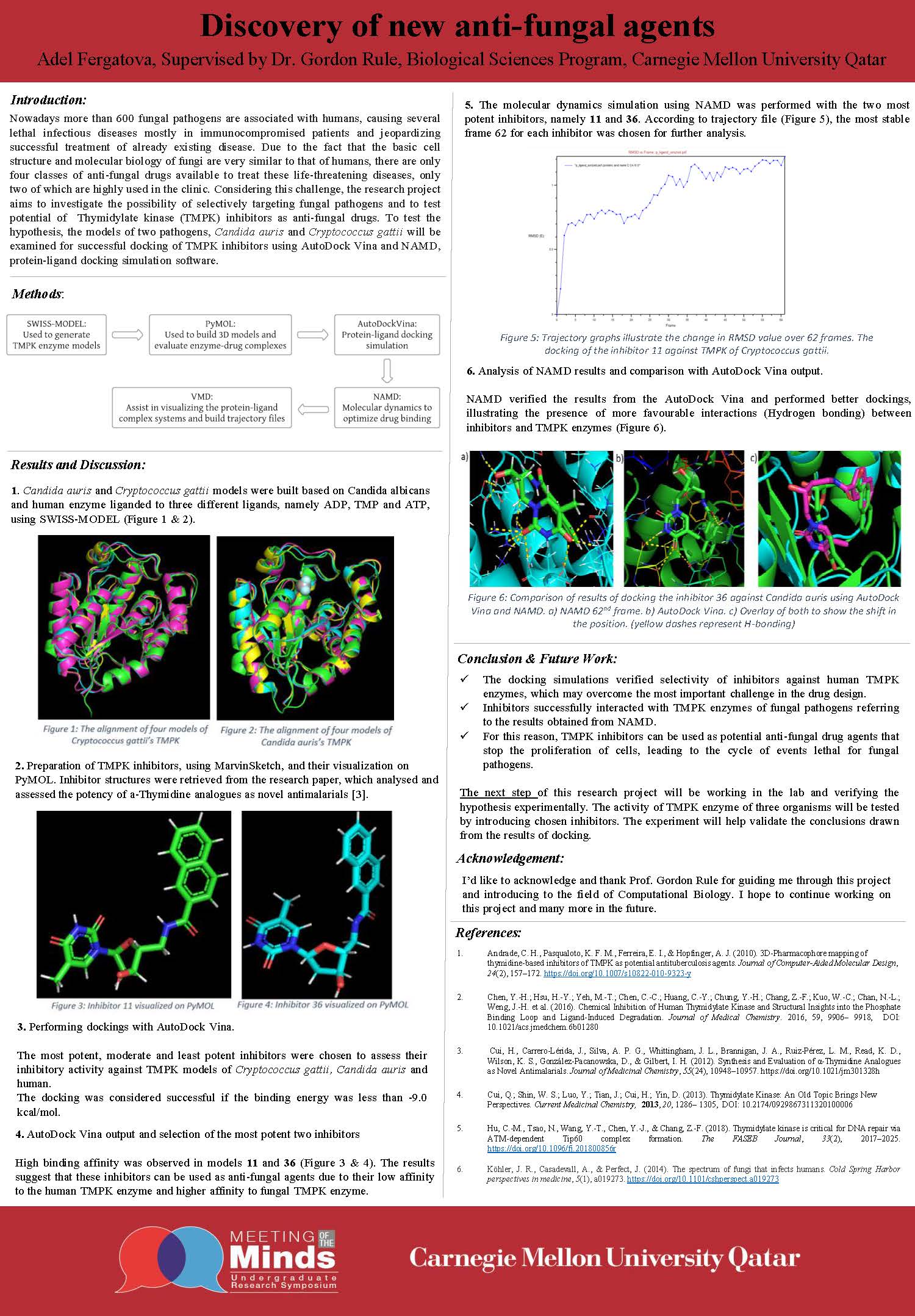More than 600 fungal pathogens are associated with humans and many can cause several lethal infectious diseases mostly in immunocompromised patients, further damaging different parts of the body and jeopardizing successful treatment of already existing disease. Due to the fact that the basic cell structure and molecular biology of fungi are very similar to that of humans, there are only four classes of anti-fungal drugs available to treat these life-threatening diseases, only two of which are highly used in the clinic. Considering challenges faced in anti-fungal drug design, this research project aims to investigate the possibility of selectively targeting fungal pathogens and inhibiting the Thymidylate kinase (TMPK), enzyme essential for DNA replication and repair, to test potential of TMPK inhibitors as anti-fungal drugs. To test the hypothesis, the models of two pathogens, Candida auris and Cryptococcus gattii, built on SWISS-MODEL, fully automated protein structure homology-modeling server, will be examined for successful docking of TMPK inhibitors using AutoDock Vina, protein-ligand docking simulation software. To verify the selective targeting of fungal pathogens, the active site of human TMPK enzyme will be aligned with two other fungal pathogens, illustrating the structural differences and proving the low probability of inhibitors affecting the human TMPK enzyme.



